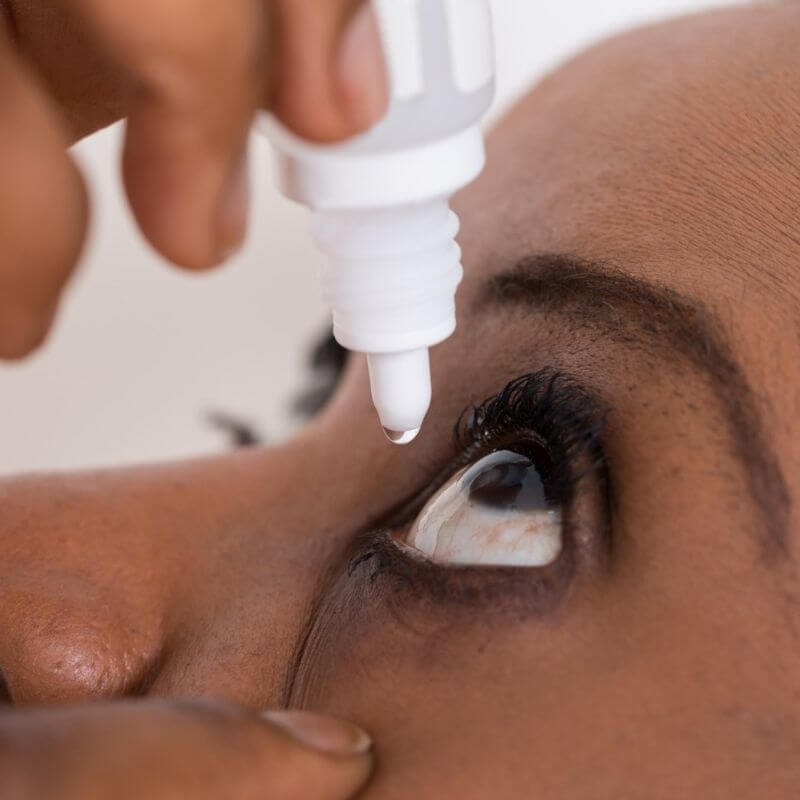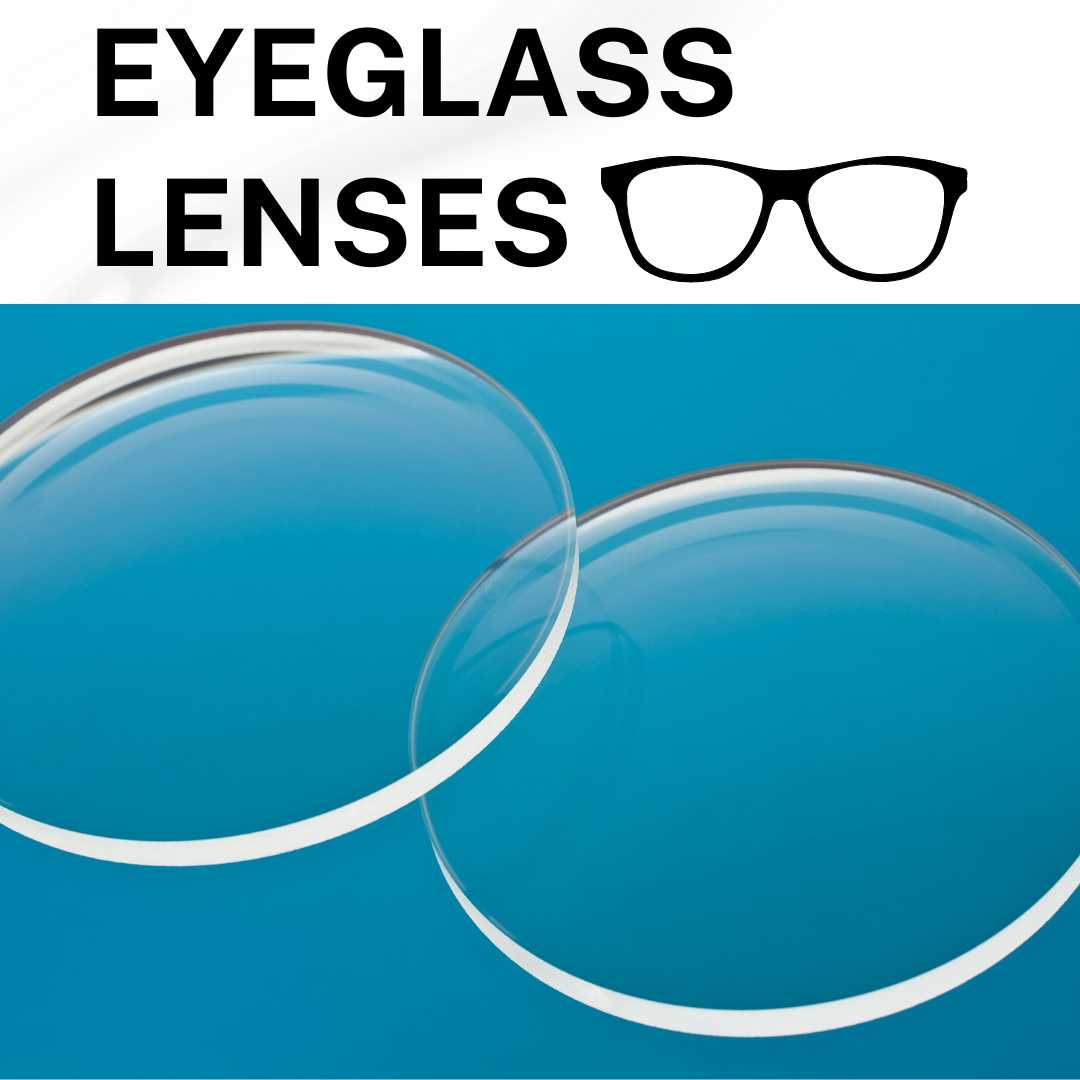There is this common assumption, especially among first-time patients, that when you visit the clinic for an eye condition, you will be prescribed glasses.
This is not true. There are many treatment options for eye problems and the treatment recommended will always be based on the type of eye problem, the treatment the problem responds best to and factors specific to you like age and so on.
There are 6 major treatment options for eye problems. They are:
- Eyeglasses (spectacle lenses)
- Contact lenses
- Medications (eye drops, tablets, etc.)
- Surgery
- Vision Therapy
- Home remedies
While you may have your preferences, know that every eye problem has specific treatment(s). Some respond to more than one treatment type. For others, only one treatment option is currently available.
Now read on to learn more about the 6 most common treatment options for eye problems
Eyeglasses
Eyeglasses are a popular and easy treatment for eye problems. They consist of a pair of spectacles lenses fitted on a frame.
The lenses are the part of the eyeglasses that help you see better, while the frame is what holds them in place on your face, right in front of your eyes.
The lenses help you see better by bending rays of light entering the eyes and assisting the eyes to focus them properly on the retina.
For this reason, eyeglasses work best for eye problems that occur as a result of the inability of the eyes to focus light rays properly on the retina. Examples of such eye problems include:
Myopia (shortsightedness): In myopia, the rays of light entering the eyes focus in front of the retina. This makes it difficult to see things that are far. Lenses that correct myopia (concave or minus lenses) help you see far objects well.
Hyperopia (longsightedness): In hyperopia, the rays of light entering the eyes focus behind the retina. This makes it difficult to see things that are near. Lenses that correct hyperopia (convex or plus lenses) help you see near objects clearly and comfortably.
Astigmatism: In astigmatism, the curvature of the front surface of the eye is irregular. So, rays of light entering the eyes do not form a single focus on the retina. They are scattered. This causes distortion of images and blurry vision at different distances. Lenses that correct astigmatism eliminate the distortion and help you see clearly at all distances.
Presbyopia: In presbyopia, the natural lens in the eyes gradually hardens and becomes less flexible. This makes it difficult for the lens to change shape and focus on near objects. This causes blurry near vision, difficulty reading tiny prints, and more. Lenses that correct presbyopia help you read tiny prints and perform other near tasks comfortably.
In addition to focusing light on the retina, some eyeglasses can block or filter off harmful rays/reflections and make vision more comfortable. This makes them helpful for managing eye problems that are caused or worsened by exposure to light reflections and harmful radiation. An example is digital eyestrain, also known as computer vision syndrome.
In summary, eyeglasses are used to manage eye problems that occur when the eyes do not bend rays of light properly or when they are exposed to light reflections or harmful rays. Technically, medications do not take care of these problems. Sometimes, however, medications may be prescribed to relieve some of the symptoms associated with these problems like headaches, itching, and dry eyes.
Contact Lenses
Contact lenses are lenses that are worn directly on the surface of the eyes.
They help you see better by bending rays of light entering the eyes and assisting the eyes to focus them properly on the retina, just like eyeglasses.
In addition to focusing light on the retina, some contact lenses protect an injured eye and prevent it from rubbing against the eyelid and causing eye discomfort. Some others are just for cosmetic purposes, like changing the colour of the eyes or hiding scars on the cornea.
In general, eye doctors prescribe contact lenses mainly to correct refractive errors and protect injured eyes from discomfort in persons eligible to use them.
While contact lenses are cosmetically better, especially for people who have high prescriptions, they are not suitable for some people. They require more care than eyeglasses and can cause eye complications if not used as recommended.
So, before using them, it is necessary to do a contact lens assessment to ensure that they are suitable for you.
On a general note, you should not use contact lenses if you;
- Have an active eye infection or have a history of recurrent eye infection
- Have dry eye or allergies
- Work in a very dusty environment
- Are unable to follow instructions on how to use and care for contact lenses, or have a history of not following instructions
- Are unable to insert and remove their contact lenses without help.
- Use medications (including eye drops) that are contraindicated with contact lenses or their care solutions.
Eye Surgery
Eye surgery is surgery done on the eyes. It is also called eye operation. Eye surgeries are done by eye care professionals known as ophthalmologists. These are medical doctors who specialize in the medical and surgical care of the eyes.
Unlike other eye treatment options, surgeries are invasive. This means that they involve entering inside the eyeball to treat an eye problem. This is done using surgical instruments or a beam of light (in laser surgery).
Eye doctors recommend surgeries when it is necessary to do one or more of the following:
- Replace a damaged part of the eye. E.g. Cataract surgery – done to replace the cloudy lens in the eye.
- Remove a mechanical obstruction inside the eye. E.g. Glaucoma surgery – that is done to open up the blocked drainage channel in the eye.
- Mechanically reposition a part of the eye. E.g. Surgery that is done to fix crossed eyes that do not respond to other forms of treatment.
- Repair a damaged part of the eye. E.g. Surgery that is done to repair an eyeball that was torn or punctured.
While many people are afraid of eye surgeries, sometimes they are the only treatment option that would restore or improve eyesight.
If you ever need eye surgery, instead of allowing fear to stop you from doing the needful, take some time to prepare for the surgery. The preparation process can help you overcome some of your fears.
- Talk to the eye doctor.
- Know what to expect before, during, and after the surgery.
- Get fit and healthy for surgery.
- Make sure you have someone (family or friend) to support you on the day of the surgery and the days after.
- Stay positive
Medications
Medications are drugs used to prevent or treat diseases. In the eye, they can treat;
- Infections
- Inflammations
- Allergies
- Glaucoma
Apart from treating the above-mentioned conditions, medications may also be prescribed to relieve eye symptoms like pain and itching even if they do not treat the underlying cause of these symptoms.
Medications for eye problems come in different forms. These include:
- Eye drops
- Eye ointment
- Eye injections
- Oral tablets
The form of medication prescribed by an eye doctor depends on the eye condition. On a general note, doctors recommend eye drops and ointments for eye conditions arising from a problem in the anterior part of the eye. Eye injections and oral tablets are recommended for eye conditions caused by an abnormality in the posterior part of the eye.
The most commonly used form of eye medication is the eye drop.
They are of different types;
- Antibacterial eye drops – for treating eye infections
- Anti-allergic eye drops – for managing eye allergies
- Steroidal eye drops – for managing some eye inflammations
- Non-steroidal eye drops – for managing some eye inflammations
- Lubricating eye drops/artificial tears – for managing dry eye
- Anti-glaucoma eye drops – for managing glaucoma
As you can see from the list above, these eye drops do different things in the eye. This is why it is not advisable to purchase one without consulting the doctor. If you ever do and later decide to consult your doctor, it is not enough to tell him/her that you used an eye drop. The name of the medication and dosage administered is important. Drugs can interact with one another. So, your doctor should know what you have used, to aid the prescription of the most suitable medication for your condition.
Vision Therapy
Vision therapy is a professionally supervised, drug-free eye treatment program that is recommended for the management of certain eye conditions by optometrists. It can be likened to physical therapy except that in this case, the focus is on the eyes and other parts of the visual system.
Vision therapy is recommended when lenses and medications do not provide satisfactory results, but, there is a chance of improving vision by training the eye muscles and the parts of the brain that are responsible for seeing clearly and comfortably. Examples of such situations include:
- Amblyopia, also known as lazy eye
- Strabismus, also known as crossed-eyes
- Other eye movement and coordination problems
- Vision development disabilities or lost visual abilities associated with brain injury
There are many programs brandished online as vision therapy designed to reverse refractive errors and presbyopia. It is important to state these programs involving random eye exercises are not vision therapy. Also, note that refractive errors and presbyopia cannot be corrected with vision therapy. This is because they are not caused by eye muscle problems or brain injury.
Vision therapy is an organized series of eye exercises and vision procedures, designed to meet an individual patient’s needs and performed under the supervision of an eye doctor over a period of time. Anything short of this is not vision therapy.
To ensure that you always get good recommendations for the treatment of eye problems, consult trained, qualified, and licensed eye care providers.
Home Remedies/Lifestyle Changes
Home remedies are simple physical measures and natural products that are used to manage and relieve the symptoms of minor eye conditions or provide first aid for more serious eye conditions before visiting the clinic.
Here are common home remedies and the eye conditions they can help relieve.
Flushing the eye with water
This helps remove foreign bodies like dust, debris, and chemical substances from the eye. With chemical splashes, flushing the eye with water is the first thing you should do before coming to the clinic. Place the affected eye under a tap and run water into it for about 15 minutes. This helps wash off the chemical. If there is no tap, improvise with a bottle filled with clean water. This step is essential to minimizing the contact time with the chemical and lowering the risk of eye damage by the chemical.
Warm compress
This involves applying heat treatment to the eye usually with a heated eye mask or towel soaked in hot water (not too hot for the skin). It helps relieve eyelid conditions like stye, chalazion and blocked eyelid glands. It softens the swellings, opens up clogged ducts, and allows the content to flow out. Sometimes this may be all you need for these conditions. However, if they do not resolve, visit the clinic for professional care and treatment.
Cold compress
This involves applying cold treatment to the eye usually with ice packs. It helps reduce swelling and redness and also numbing pain after a blow to the eye. It can also relieve allergy symptoms. It works by reducing blood flow and nerve activity in a particular area.
Relaxing and resting the eyes
This is an effective way to relieve eye discomfort associated with eyestrain. Blink consciously and take breaks in between digital device use. Also, get adequate sleep every day to relax and rest your eyes.
Note that home remedies are not the same as over-the-counter (OTC) medications. While home remedies are physical measures or natural products, over-the-counter (OTC) medications are medicines purchased from a pharmacy without a prescription from the doctor). Examples are certain anti-allergy eye drops and artificial tears. These OTC medications can relieve symptoms of eye conditions like allergies and dry eye respectively.
Whether you use a home remedy or OTC medication for an eye condition, do not hesitate to consult the eye doctor if your symptoms are severe or do not resolve after 48 hours.


